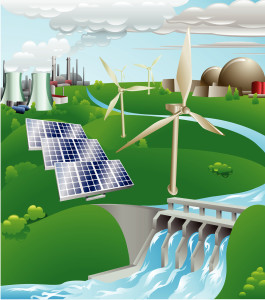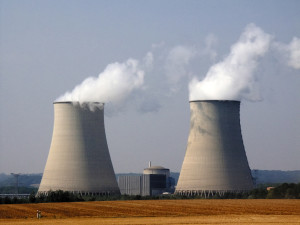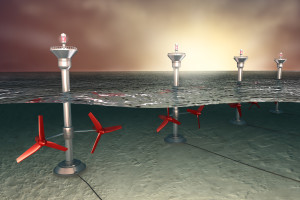 The term “alternative energy” is really about how energy is produced as opposed to actually describing anything about the energy itself and is almost always used to describe energy that is not produced by burning fossil fuels such as coal, oil or gas.
The term “alternative energy” is really about how energy is produced as opposed to actually describing anything about the energy itself and is almost always used to describe energy that is not produced by burning fossil fuels such as coal, oil or gas.
Alternative energy is any type of energy that is produced from resources that are readily replenished. Normally this refers to ways electricity is produced, although when referring to motor vehicles the term generally refers to vehicles that are not powered by petrol or diesel. In regular use, alternative energy is the term used to refer to a group of generating methods such as solar panels, wind turbines, geothermal power, heat pumps and even nuclear power.
There is some debate when it comes to nuclear energy and whether it should in fact be described as alternative energy although generally speaking, its use is accepted although when many people talk about alternative energy with respect to environmental concerns, they may not include nuclear.
It’s important to understand what is alternative energy because this is a topic that easily becomes political or environmental, but it’s critical for the future of our economy and the advancement of society. Energy needs continue to grow while gas and oil are finite supplies.
Geothermal Energy
Geothermal energy is one of the least commonly used alternative energy sources, in large part because on a large scale you need volcanic or extreme natural heat from the Earth for it to be viable on a large scale. Places that have access to that type of flow can use geothermal as a natural, clean, and powerful energy source for environmentally-friendly electricity.
Wind Energy
Wind energy is another extremely popular option with several US states and even some European countries receiving anywhere from 20% to 50% of all their energy from wind sources. These are the giant white windmills that you may see in fields or even lined up in rows out in an ocean. The motion generated by the wind becomes electricity. In many areas, this is one of the fasted growing forms of alternative energy.
Solar Energy
Solar energy is probably the most well known out of all the alternative energy options, and as the technology is getting better and better, solar energy is becoming inexpensive and more efficient. Many homes have individual solar panels to supplement power, and there are even backpacks and street signs/lights that have little solar panels helping to power them throughout the day.
The sun’s rays are always going to come back – so it makes sense to look at solar power as a long term option.
When you want to know what is alternative energy, that’s what people are talking about. Energy that is environmentally friendly and comes from sources that can be renewed. Think non-fossil fuel sources for electricity and you’re on the right path to more fully understanding the alternative energy movement. This is a shift that is going to continue for the long term.
 Many people wonder is nuclear energy renewable, however, it is not. Although it’s not a renewable energy source, it’s far from the end of the discussion. Nuclear power has incredible potential, as well as incredible dangers. It has very definite advantages that make it worth considering compared to other sources of energy. It also has drawbacks that are quite unique.
Many people wonder is nuclear energy renewable, however, it is not. Although it’s not a renewable energy source, it’s far from the end of the discussion. Nuclear power has incredible potential, as well as incredible dangers. It has very definite advantages that make it worth considering compared to other sources of energy. It also has drawbacks that are quite unique. Tidal power or energy is produced by ocean waters surging during the rise and fall of the tides. Tidal energy is a source of renewable energy. In recent years, engineers developed methods for harnessing tidal movements to generate electricity. This is most successful in areas where there is a significant range between high and low tide.
Tidal power or energy is produced by ocean waters surging during the rise and fall of the tides. Tidal energy is a source of renewable energy. In recent years, engineers developed methods for harnessing tidal movements to generate electricity. This is most successful in areas where there is a significant range between high and low tide.